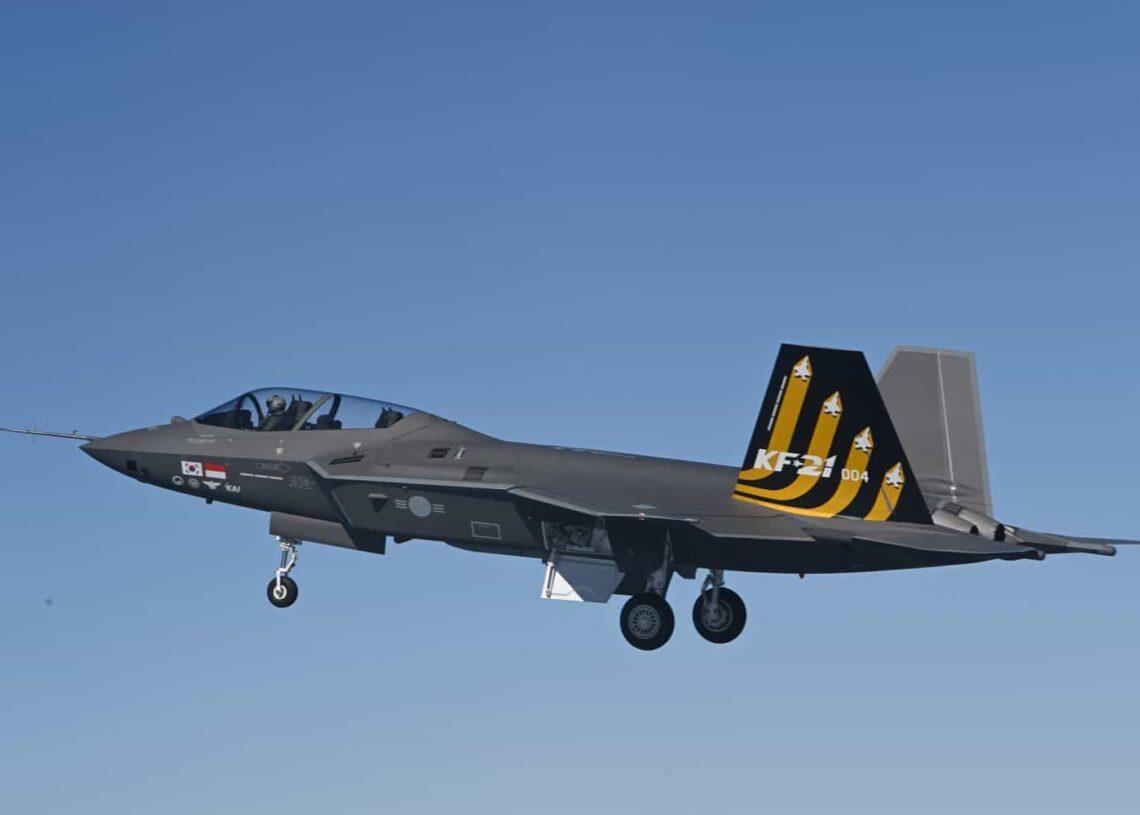The KAI KF-21 Boramae is a twin-engine, multirole fighter aircraft classified as a 4.5-generation jet, jointly developed by South Korea and Indonesia. "Boramae" means "hawk" in Korean, symbolizing the aircraft's agility and fighter capabilities. Designed for both the Republic of Korea Air Force (ROKAF) and the Indonesian Air Force (TNI-AU), the KF-21 is capable of performing both air-to-air combat and air-to-ground attack missions with high effectiveness. The KF-21 project marks South Korea's second indigenously developed fighter aircraft project (the first being the FA-50 Golden Eagle, a light attack and training aircraft). This project pursues strategic objectives such as increasing South Korea's technological independence in the defense industry, showcasing its advanced fighter aircraft development capabilities, and modernizing its air force.

KAI KF-21 Boramae (savunmatr)
Development Process: Partnership and Phases
The KF-21 project has been shaped by South Korea's need for a technologically superior platform to replace its aging fighter aircraft like the F-4 Phantom II and F-5 Freedom Fighter, which have long been in service and can no longer fully meet the requirements of the modern combat environment. The main contractor of the project is Korea Aerospace Industries (KAI), South Korea's leading aerospace and defense company, with Indonesia included as a significant partner to share development costs and facilitate technology transfer. The project is also known as "Korean Fighter eXperimental" (KF-X).
The development process of the KF-21 is planned in two main phases:
- Block 1: This initial phase primarily covers the basic configuration focusing on air superiority missions. Aircraft in the Block 1 configuration are equipped with air-to-air missile systems and advanced radar capabilities. In this phase, the aircraft's basic flight performance, avionics systems, and fundamental weapon integrations have been tested and matured.
- Block 2: The second phase aims to significantly enhance the aircraft's multirole capabilities. KF-21s in the Block 2 configuration will acquire air-to-ground guided munitions, cruise missiles, and other precision strike capabilities. This phase includes the integration of systems that will enable the aircraft to be effectively used in both air-to-air and air-to-ground missions.
In future potential development phases, improvements such as integrating internal weapon bays to reduce the aircraft's radar cross-section (RCS) and enhance its stealth features are also planned for the KF-21.
KAI KF-21 Boramae (Haci Producitons)
Technical Specifications (Estimated Values)
- Crew: Single-seat (KF-21 Block 1) or two-seat (KF-21 Block 2 and other variants)
- Length: Approximately 16.9 meters (55.4 feet)
- Wingspan: Approximately 11.2 meters (36.7 feet)
- Height: Approximately 4.7 meters (15.4 feet)
- Engine: 2 × General Electric F414-GE-400K turbofan engines
- Maximum Speed: Mach 1.81 (approximately 1,996 km/h)
- Maximum Take-off Weight: Approximately 25,400 kg (56,000 lb)
- Weapon Payload: Approximately 7,700 kg (17,000 lb)
- Air-to-Air Missiles: MBDA Meteor, AIM-9X Sidewinder, and others
- Air-to-Ground Missiles: Various guided and unguided bombs, anti-radar missiles like AGM-88 HARM, cruise missiles
Operational Expectations and Variants
South Korea aims to receive at least 40 KF-21 Block 1 configuration fighter jets by 2028 as part of its air force modernization, and to increase this number to a total of 120 units by 2032. With Indonesia's partnership in the project, that country is also expected to procure a certain number of KF-21s.
Within the KF-21 project, various variants are planned to be developed to meet different operational needs. The known primary variants so far are:
- KF-21 Block 1: The single-seat basic model primarily focused on air superiority missions.
- KF-21 Block 2: Expected to be a two-seat variant with enhanced air-to-ground attack capabilities. This model will be able to carry a wider range of weapons and will have a crew configuration capable of managing complex missions.
- KF-21 Naval Variant: The development of a naval variant capable of operating from aircraft carriers is also among future possibilities.


